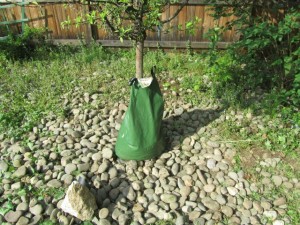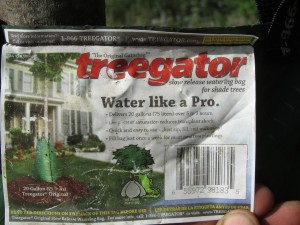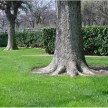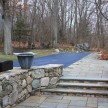Planting A Tree
How To Plant A Tree
Planting a tree can be a rewarding and fun time. It also has the potential to transform a landscape.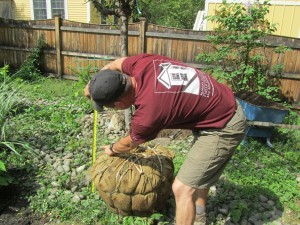
Pick A Tree For The Location:
Before buying a tree remember to pick the right tree for its location. What I mean is choose a tree that will grow and compliment its space not over grow or over power the space. Trees that are planted with little thought as to their eventual size often end up causing problem, get pruned back significantly or removed.
After you have chosen a tree and picked a location that is suitable for it then it’s time to plant the tree.
Dig the Hole:
A common mistake when planting a tree is to dig too deep or too narrow a hole. A hole too deep suffocates the tree roots. A hole too narrow and the root structure can’t expand sufficiently to feed and anchor the tree.
TIP: Trees should be transplanted no deeper than the soil in which they were originally grown. The width of the hole should be 2 to 3 times the diameter of the r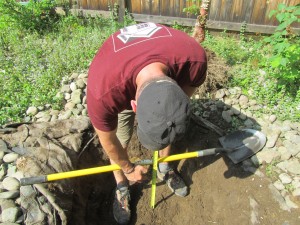 oot ball or container. I lay my shovel across the hole and use a tape measure to get the hole depth close.
oot ball or container. I lay my shovel across the hole and use a tape measure to get the hole depth close.
Planting Balled and Burlapped Trees.
Balled and burlapped trees should be lifted by the ball, not by the tree trunk. The burlap surrounding the ball should be completely removed prior to covering up the hole. Take care not to over compress the back fill soil as this may prevent water from reaching the roots and the roots from expanding beyond the ball.
Planting Container Trees.
Planting a container trees is similar to that for Balled and Burlapped tree. Remove the container completely.
If the roots are compressed or “pot bound”, use your fingers or a blunt instrument (to minimize root tearing) to carefully loosen the roots away from the tight mass and then spread the roots prior to planting.Once the tree is seated in the hole, the original soil is then back-filled into the hole to the soil level of 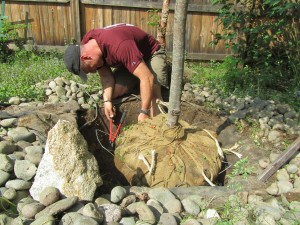 the container
the container
Watering
Newly planted trees should be watered at the time of planting. They should be watered at least once a week in the absence of rain, during the first year.Deep soakings are better than frequent light wetting. Moisture should reach a depth of 12 to 18 inches below the soil surface to encourage ideal root growth.
One new way to ensure a constant supply of moisture is through the use a TreeGator. The tree Treegator is a slow release watering system for new trees. I paid about $15.00 for mine awhile back. The Treegator delivers water directly to the root system of a newly planted tree with no wasteful run-off or evaporation. The TreeGator fits trees 1” to 3” in diameter and holds 20 gallons of water. The bag empties in 5 to 9 hours.
Mulching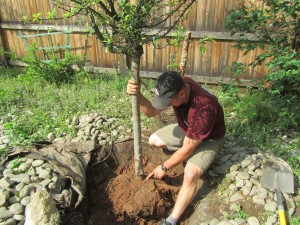
Mulch not only controls weeds it helps the tree conserve moisture and promotes water and air penetration. Mulch depth should be between 3 to 4 inches.
Take care NOT to overmuch. Many landscapers and homeowners pile on the mulch which is commonly referred to as the “Mulch Volcano.” Too much mulch can damage the tree or invite damaging insects, rodents and disease to the tree.
Fertilizer
Newly planted trees have suffered root loss and stress associated with movement between ideal nursery grown conditions and its current location. Follow your nurseries guidelines for applying fertilizer or a root stimulant.
Staking and Guy Wiring 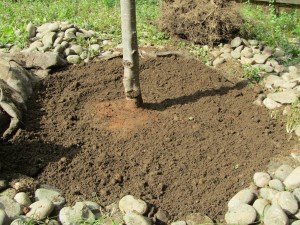
Newly planted trees should be able to support their own weight, but when they are transplanted, they sometimes need help.
Guidelines:
1. Only stake the tree long enough for it to be able stand on its own.
2. Stakes should not be too tight – there should be room for the tree to sway in the wind.
3. Stakes should not be too loose – the tree should not rub against the stakes.
4. Stakes should be buried at least 1.5 feet underground to provide ample support.





